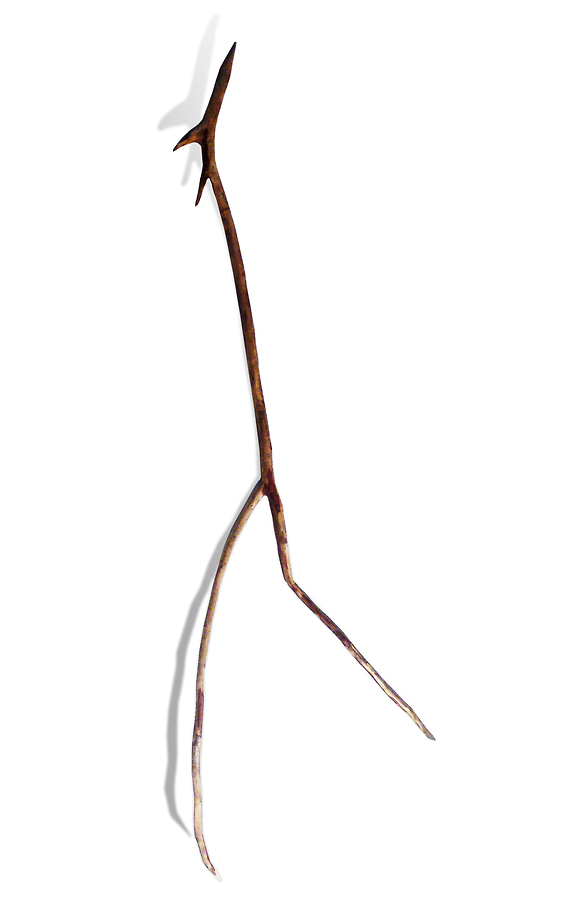It was in 1997 while on a camping trip in Licola Victoria that Peter hunted down a twig to hold his marshmallows over the campfire. He whittled away on a small branch until he was left with the perfect twig that could hold two marshmallows over the fire at once. It wasn’t until he’d finished all his treats that he noticed an abstract human form in the twig he was holding. At that very moment, he says it was as if his eyes had discovered nature for the first time.
Peter’s chance discovery of that unassuming twig with an abstract human shape began his ongoing study of the figurative form as observed in organic fractals. Twigs – fragile, precious, shaped by the elements. Delicately carved, the revealed forms have been translated on a magnified scale and immortalised in bronze, steel and stone – a stark contrast to their fragile nature.
Syndicas has had no institutional training as a sculptor. He innovated his techniques mainly through trial and error and an ambition to recreate these forms of his on a grander scale. Over the years he has become quite proficient in a wide variety of mediums and has a special passion for working in stone. In particular he has focussed specifically on working in varieties of Australian marbles, granites and stromatolites.
Syndicas continues to explore his fascination of fractals in nature and takes great pleasure in the fact that he has an infinite source of inspiration surrounding him.
“2024 marks 27 years since I began studying the human form by observing plant life. Over these years I have explored many new mediums and techniques, but the one thing that has never changed is my total fascination and adoration of these simple organic figurative forms.”
The twig pictured here is the “Marshmallow Stick” from Licola which was the original spark of inspiration that helped Syndicas discover nature.
